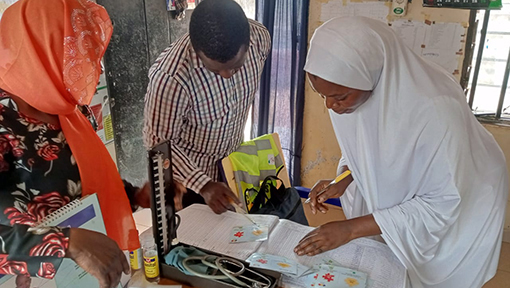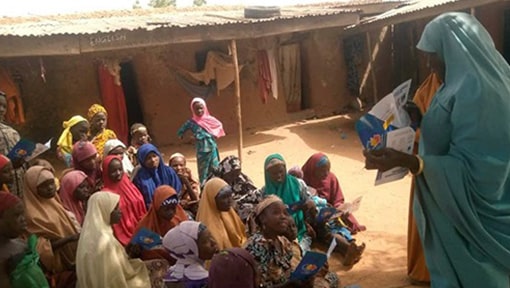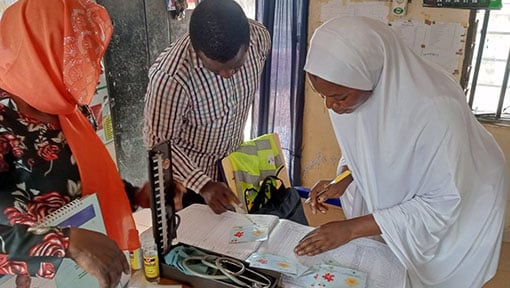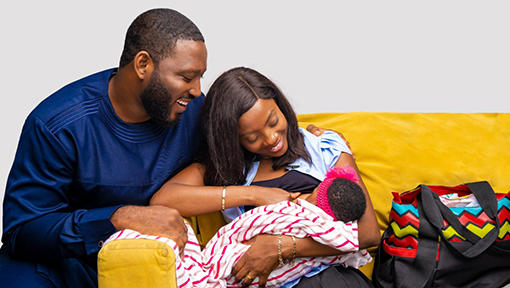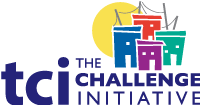Engaging Young Men and Boys to Improve Adolescent and Youth Sexual and Reproductive Health
by Lisa Mwaikambo | Oct. 21, 2018“Gender inequality holds back the growth of individuals, the development of countries and the evolution of societies, to the disadvantage of both men and women.”
– UNFPA State of World Population Report 2010
In addition, as the #MeToo movement has shown, gender-based violence stems from unequal power dynamics supported and reinforced by social and gender norms. Findings from the International Men & Gender Equality Survey (IMAGES) reveal the internalization of hyper-masculine norms are strongly and consistently correlated with the following risk behaviors across multiple countries:
- Use of physical and sexual violence against female partners
- Perpetrating sexual harassment
- Their participation in care work and maternal, newborn and child health
- Couple communication about reproductive health
- Having sought HIV testing
- Their number of sexual partners
- Having paid for sex
- Rates of self-reported sexually transmitted infection symptoms
- Condom use
- Substance/alcohol use
 Despite the literature emphasizing the importance of involving boys and men, they are often overlooked in traditional sexual and reproductive health programs as, typically, the focus is mostly on girls and women. But, girls and women do not operate in this world alone; and given their subordination in most societies, boys and men – those with power – must be effectively engaged. Promundo’s and Georgetown University’s Institute for Reproductive Health’s (IRH’s) programmatic experience in this area was discussed during a recent Initiative-hosted webinar, as well as the evidence demonstrating improvements in knowledge, attitudinal and behavioral outcomes associated with puberty awareness, gender quality and contraceptive service uptake.
Despite the literature emphasizing the importance of involving boys and men, they are often overlooked in traditional sexual and reproductive health programs as, typically, the focus is mostly on girls and women. But, girls and women do not operate in this world alone; and given their subordination in most societies, boys and men – those with power – must be effectively engaged. Promundo’s and Georgetown University’s Institute for Reproductive Health’s (IRH’s) programmatic experience in this area was discussed during a recent Initiative-hosted webinar, as well as the evidence demonstrating improvements in knowledge, attitudinal and behavioral outcomes associated with puberty awareness, gender quality and contraceptive service uptake.
Two such programs targeting two different age groups were featured to illustrate the different reproductive needs of boys/men over their lifetime.
GrowUp Smart is a puberty and fertility awareness education program for very young adolescents (10-14 years old). It was originally inspired by CycleSmart™, a simple set of materials developed and tested by IRH in 2011 in Rwanda and Guatemala to teach very young adolescents (VYAs) about puberty in a visual and concrete way. But over the course of its development, GrowUp Smart evolved into a completely new approach that draws on several of IRH’s innovative, evidence-based youth resources, like the GREAT Project’s Growing Up GREAT! flipbooks, and the My Changing Body curriculum. New topics were integrated into materials, and a comprehensive facilitator manual, designed to guide the use of these materials, was developed. All new tools were carefully tested and validated by VYAs, their parents, experienced facilitators and policymakers.
The nine-week program had trained facilitators engage very young adolescent girls and boys, and their parents in learning about the physical and emotional changes of puberty, self-care and health seeking behaviors.
Statistically significant findings from a pre-/post-test evaluation in eight Rwandan districts revealed:
- Increased knowledge of pregnancy risk among boys and girls, especially understanding when a girl is most likely to become pregnant
- Increased knowledge of the menstrual cycle and healthy secretions by 50-70% among both girls and boys
- Improved communication with parents:
- 25% increase in the number of VYAs who felt comfortable talking with a trusted adult about physical changes during puberty.
- 20% increase in the number of VYAs who felt comfortable talking with a trusted adult about romantic relationships.
- 20% increase in the number of VYA girls who felt comfortable talking with a trusted adult about menstruation.
- 40% increase in the number of VYAs who talked with a trusted adult about puberty changes
Program P was designed to promote:
- Men’s involvement in prenatal and postnatal care
- The equal division of household labor and caregiving
- Positive communication and reduce parental and family stress and violence
Program P includes hands-on activities and role-playing exercises for fathers and their partners. Along with group education for parents, Program P trainings are carried out for health and social sector staff in conjunction with community-level campaigns and local and national advocacy initiatives. It has been rolled out in multiple countries and is currently being scaled up in Rwanda, Lebanon, Bolivia and elsewhere.
A randomized control trial of 1,700 fathers (21-35 years old) and their partners in Rwanda found that after two years being out of the program:
- Intimate partner violence was down by 42%
- Violence against children was down by 15%
- Male and female antenatal care attendance was up
- Family planning use was up
The materials related to these programs can be found on TCI AYSRH Toolkit under Gender Transformative Approaches. You can adapt them for your own local context.

